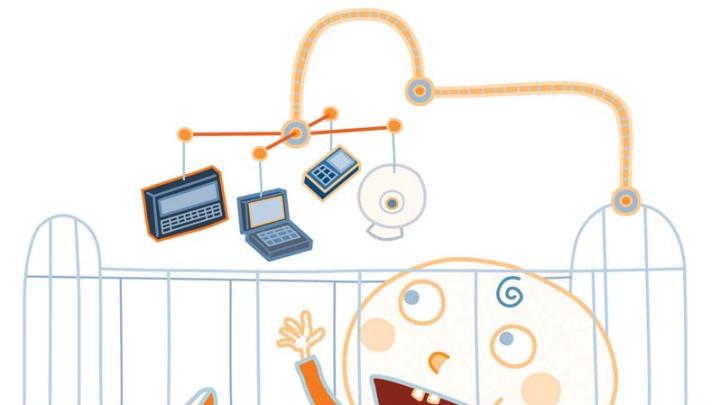Forty years ago they were “Born Free,” 20 years ago they were “Born in the U.S.A.,” but today kids are born digital, and taking their parents “native,” too. No matter what your age, says John Palfrey, executive director of the Berkman Center for Internet and Society at Harvard Law School, you can become what he calls a “digital native” by living simultaneously on line and off with the help of technological aids—BlackBerrys or social-networking sites like MySpace that give you an on-line presence all day (and even all night) long. For the past two years Palfrey and his coauthor, Urs Gasser, have been working on a book tentatively titled “Born Digital,” in which they hope not only to define this group, but also to examine its norms and recommend policy changes that would minimize the risks of on-line life while fostering its creative potential.
One of the digital native’s primary traits is an extensive on-line persona. “[Their] identity is expressed through both off-line and on-line media,” explains Palfrey. “And there’s not much of a distinction in the digital native’s mind between these two.” Digital natives pick photographs for their on-line personas on social-networking sites with the same care with which they pick their clothes each morning. They go on line to reveal rather than conceal themselves.
And it’s the extent to which they reveal themselves that ba±es the uninitiated, most of whom—with different attitudes toward personal privacy—would never think of publishing their phone numbers or home addresses (let alone a photographic record of a Saturday-night bender) on the Internet. Even as digital natives acknowledge the danger their openness may pose in attracting predators, they are “nowhere near as aware of the transference of data [sent] about them across companies,” says Palfrey. Native or not, nobody reads the fine print. He is worried: “The amount that somebody is going to be able to know about somebody [else] born today, 30 years from now, is completely unimaginable.” From sonograms to wedding photographs and the Social Security Death Index, digital records mark nearly every milestone in our lives. And, because storage is plentiful and cheap and the information never decays, those records don’t disappear.
Palfrey believes companies should be required to disclose—either in plain English or on an icon resembling a nutritional label—what they do with the information they collect. “What is it that you collect and store about me?” he would ask. “Is it only what I put in, or is it my browsing habits? Do you share [data] with any third parties? How long do you keep all of [it]?” He also advocates updating the copyright code and making social-networking sites such as Facebook more, though by no means entirely, accountable for their users’ actions. He generally shies away from sweeping policy measures, such as banning social networks altogether. “Kids will find some other digital public in which to live their lives,” he reasons. “You can just keep banning them, but it’s ‘whack-a-mole.’”
He fears that keeping kids off line would stifle the creativity he sees springing up all over the Web. In amateur videos on YouTube and in blogs, he sees a popular movement toward what he calls “semiotic democracy,” which refers to the way each person watching a television show interprets it differently. Digital tools, Palfrey claims, take this a step further: instead of simply supplying meaning to someone else’s show, anyone with a digital camera can make his or her own.
Palfrey points to parents and educators, rather than legislators, as children’s best guides to the often hazardous terrain of the digital world. But parents and educators, to be effective, must engage with that world and understand how young people behave in it. For instance, while conducting a survey of study habits, Palfrey was unable to find a single digital native whose first step, when assigned a research paper, was toward a library. Instead, students typed their topic into a Google search bar, scrolled down to the reference in Wikipedia (an on-line encyclopedia edited by its readers), read the entry, and then followed the links to learn more. “The only variant I’ve heard to that,” says Palfrey, “is typing en.wikipedia.org and going straight to Wikipedia.” Whether or not Wikipedia is a credible source, teachers need to know that their students consult it before they can present alternatives.
Palfrey hopes that digital natives eventually become creators of on-line content, rather than simply consumers. Shooting and posting a video, or writing a comment on a message board, he argues, is a way of reaching out to an audience that potentially numbers in the millions. “If in fact kids over time find that they can have more of an impact on their society by virtue of what they can do through these new media…I think that leads to a more active form of democratic participation,” he says—looking forward to a time when those who choose to be born digital regularly make, unmake, and remake the information world they live in.
~Paul Gleason








